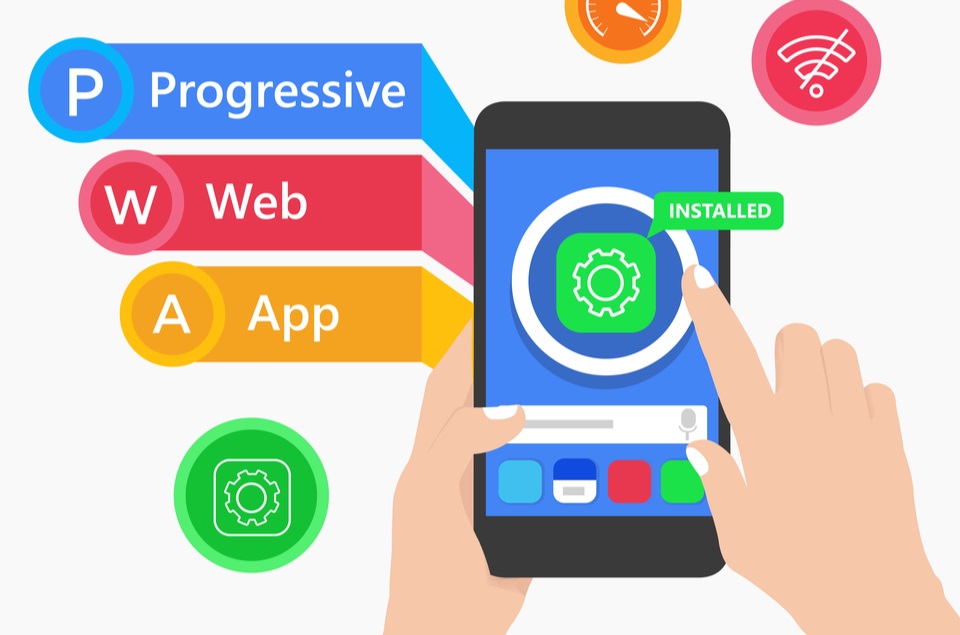Introduction
In today’s fast-paced digital world, users demand speed, convenience, and seamless experiences. This is where Progressive Web Apps (PWAs) come in. PWAs are web applications that offer a native app-like experience while running in a browser. They’re fast, reliable, and engaging—bridging the gap between traditional websites and mobile applications.
Whether you’re a developer, business owner, or tech enthusiast, understanding PWAs is essential in 2025 and beyond. This article dives deep into what PWAs are, how they work, their benefits, and how they are shaping the future of the web.

What is a Progressive Web App (PWA)?
A Progressive Web App is a type of web application that uses modern web capabilities to deliver an app-like experience to users. Unlike traditional apps, PWAs don’t require installation through an app store. Instead, they can be accessed directly via a URL and can be added to a device’s home screen.
PWAs leverage service workers, manifests, and responsive design to function like native apps. This means they can work offline, send push notifications, and load instantly, even on slow networks.
Key Features of PWAs
-
Progressive – Works for every user, regardless of browser choice.
-
Responsive – Adapts to any screen size: desktop, tablet, or smartphone.
-
Offline Functionality – Uses service workers to cache content and enable offline use.
-
App-like Interface – Looks and feels like a native app with smooth interactions.
-
Linkable – Share via URL without the need for complex installation.
-
Installable – Can be added to the home screen without going through app stores.
-
Secure – Served via HTTPS to prevent snooping and tampering.
-
Push Notifications – Allows real-time engagement with users.
Why PWAs Matter in 2025
PWAs are not just a trend—they’re a practical solution to many limitations of native apps and traditional websites. In regions with slow or expensive internet, PWAs provide an efficient way to access content without using up too much data.
In addition, with the rising cost of app development and maintenance across multiple platforms, PWAs offer a cost-effective alternative. Businesses can reach users on any device using a single codebase.
Real-World Examples of PWAs
Several big brands have adopted PWAs to enhance user experience and reduce bounce rates:
-
Twitter Lite – Loads in under 5 seconds on 3G, uses less data, and boosts engagement.
-
Pinterest – Saw a 40% increase in time spent on site and a 44% increase in ad revenue after switching to a PWA.
-
Forbes – Delivered a faster, more reliable reading experience with its PWA.
These success stories highlight the power of PWAs in delivering high-performance, user-friendly experiences.
Advantages of Using PWAs
-
Faster Load Times: PWAs cache assets and load instantly.
-
Increased Engagement: Push notifications and home screen access keep users coming back.
-
Lower Development Costs: Build once, deploy everywhere—no need for multiple native apps.
-
Improved SEO: PWAs are indexable by search engines, unlike traditional apps.
-
Offline Capability: Offers access to content even when offline or on poor networks.
How to Build a PWA
To create a Progressive Web App, you’ll need:
-
HTTPS Hosting – For security.
-
Web App Manifest – A JSON file that tells the browser about the app and how it should behave.
-
Service Worker – A JavaScript file that handles caching and offline functionality.
-
Responsive Design – Ensures the app works across devices.
-
App Shell Architecture – Separates the content from the design for faster loading.
Popular frameworks and tools like React, Angular, Vue.js, and Workbox simplify PWA development.
Common Use Cases for PWAs
-
E-commerce Platforms – Boost conversions and reduce load times.
-
News & Media Sites – Deliver fast access to articles and videos.
-
Educational Apps – Provide offline access to resources for learners.
-
Financial Services – Secure, responsive tools for transactions and account management.
-
Booking & Travel Services – Let users browse and book even on flaky connections.
Challenges and Limitations
Despite their advantages, PWAs face some limitations:
-
Limited iOS Support – Although improving, Apple’s support for PWA features like push notifications is more restricted than Android.
-
Device Hardware Access – Native apps still have more access to device features.
-
App Store Visibility – PWAs are not featured in app stores by default, although workarounds exist (e.g., PWAs in Microsoft Store or Play Store with trusted web activity).
The Future of PWAs
PWAs are expected to become even more powerful with the advancement of web APIs. Features like background sync, file system access, and native-like animations continue to blur the line between web and native apps. As browsers evolve, the capabilities of PWAs will expand, making them an even more attractive option for developers and businesses.
Google, Microsoft, and Mozilla are heavily investing in PWA support, and major platforms are integrating better tools for building and deploying PWAs.
Conclusion
Progressive Web Apps represent the future of web development—offering a perfect blend of speed, reliability, and user engagement. For businesses looking to expand their reach without blowing their budget, PWAs provide a powerful solution.
If you’re building a new app or looking to improve your web presence, it’s time to consider Progressive Web Apps. They are not only a smarter choice today—they’re an investment in the future of digital experiences.



